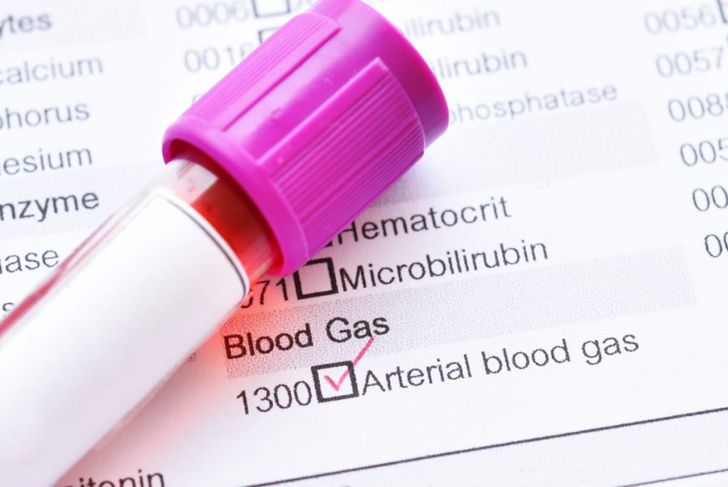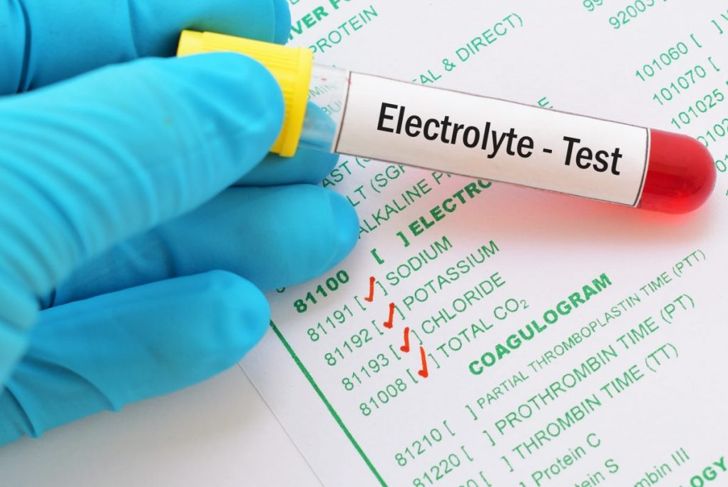An arterial blood gas test or ABG reveals the current state of respiration and metabolism. Time-critical processing by a lab or testing equipment yields values that show how well the patient’s respiratory system is exchanging oxygen and carbon dioxide. In patients with respiratory limitations such as COPD or asthma, the values will help determine the progression of the condition and amount of oxygen supplementation needed. Other values in the ABG test show the state of the metabolism, which uses oxygen and carbon dioxide for the chemical processing of energy.
Is the Draw for ABG Different From a Normal Blood Draw?
Usually, doctors draw blood for arterial blood gas tests from the radial artery in the wrist which, in hospitalized patients, may already have an arterial line in place. The medical professional may also draw blood from the femoral artery in the groin or the brachial artery in the arm. In some cases, venous blood can be used, though this is not optimal. Once blood is extracted, technicians must run the tests within ten minutes for best results.
Why Is This Test Ordered and What Does It Show?
The arterial blood gas test results show the concentration of certain gases such as oxygen and carbon dioxide, which are essential for the body’s operation. An AGB diagnosis and evaluates respiratory diseases and conditions that affect lung function and efficiency, and to check the effectiveness of oxygen therapy. ABG results also reveal information about metabolism by showing the balance of acidity and alkalinity that reflects the function of organs such as the kidneys and lungs. A doctor may order the test if he or she suspects lung or kidney disease, metabolic conditions, and physical injuries that may affect breathing.
What is PaO2?
PaO2 is the partial pressure of oxygen in the blood that represents the overall oxygen content. It is different from SaO2 and SpO2 in that it measures how much oxygen is present, rather than the saturation of the oxygen-carrying hemoglobin molecules. “Partial pressure” is a standard term used for gas mixtures and identifies a single gas component.
Why is PaCO2 Important?
The partial pressure of carbon dioxide or PaCO2 indicates the amount of carbon dioxide present in the blood sample. This can help evaluate the effectiveness of the respiratory system in eliminating CO2 from the body. Excessive CO2 levels can indicate respiratory conditions such as COPD or asthma. CO2 levels also reflect metabolic conditions and kidney function.
Why is Blood pH Measured?
The deviation of the blood’s pH towards greater acidity or alkalinity helps determine whether the respiratory system is functioning properly. It also tells the doctor whether organs such as the kidneys are effectively filtering and processing blood and waste content, and if there are metabolic imbalances in the body.
What Is SaO2 and How Is It Different From Fingertip SpO2?
Fingertip measurement of oxygen saturation using an optical sensor, referred to as a pulse oximeter, provides quick and fairly reliable results referred to as SpO2. This measure of oxygen bound to hemoglobin in red blood cells gives results by measuring the amount of red and infrared light absorbed by the blood flowing through the fingertip. The SaO2 result measured directly from a blood sample is more definitive, however, because it is a direct laboratory measurement of the same value.
What does HCO3 Reveal?
HCO3 is a byproduct of metabolism the lungs release as CO2 or carbon dioxide. The kidneys also help regulate HCO2, so variations in this value can reflect kidney function changes. High levels can indicate metabolic alkalosis and conditions such as COPD, anorexia, and dehydration. Low levels can indicate metabolic acidosis, reflecting kidney or liver problems, diabetes-related conditions, and diarrhea.
How Can Hematocrit and Hemoglobin Help Understand ABG Values?
The doctor will often run additional blood tests along with a basic ABG test. The hemoglobin value reflects the protein in the red blood cells that transport oxygen. Variations in this value could indicate respiratory issues may not be the only factor in blood oxygen levels. Hematocrit indicates the concentration of red blood cells, and plays a similar role in evaluating respiratory conditions.
How Do Electrolytes Help With ABG Testing?
A broader test result can include ABG results and a variety of electrolyte values, offering a more complete picture. Potassium, calcium, sodium, and a calculated value that helps interpret blood pH imbalance called the anion gap, are included in these results. These can provide additional perspectives on respiratory, kidney, and metabolic functions.
How Does Altitude Affect ABG Oxygen Values?
At altitudes higher than approximately 3,000 feet above sea level, ABG oxygen values will start to be lower than expected because the normal respiratory processes take in air that contains less oxygen by volume. Both existing respiratory conditions and the oxygen-poor air will reduce the efficiency of the lungs.

 Home
Home Health
Health Diet & Nutrition
Diet & Nutrition Living Well
Living Well More
More




















